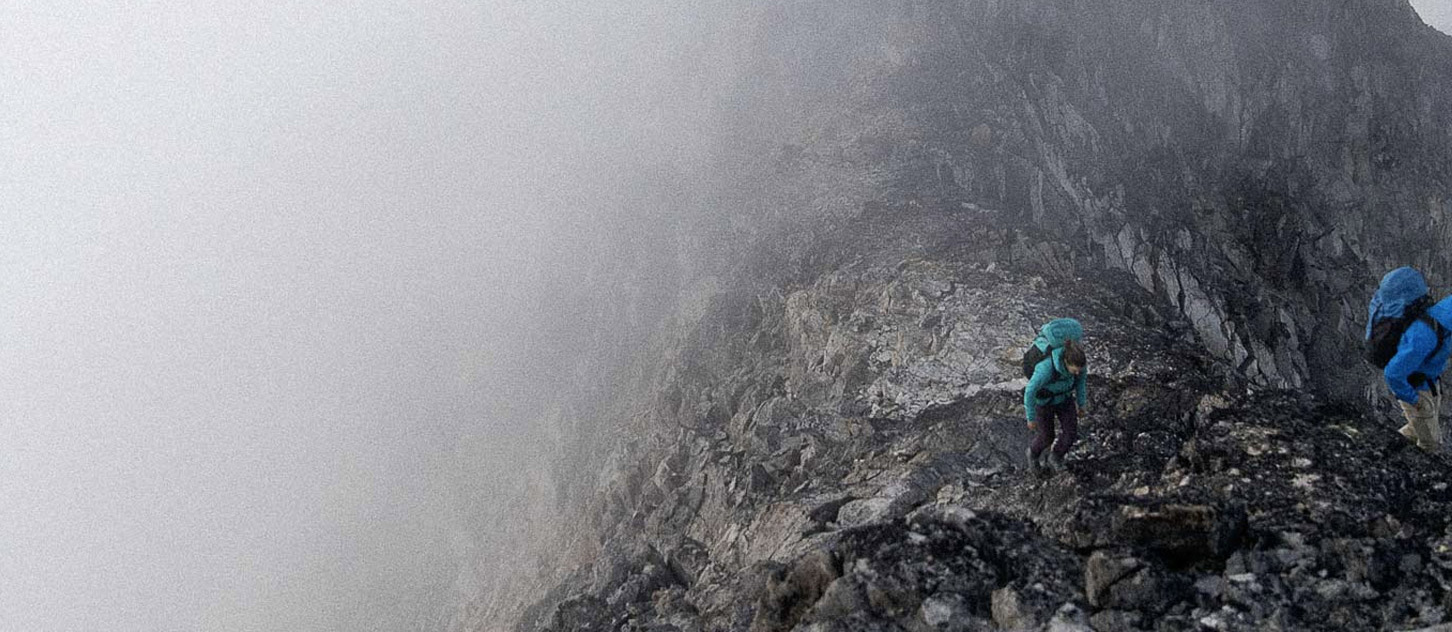
ACMG Mountain Conditions Summary for the Rockies and Columbia Mountains. July 31, 2020.
The mountains have flipped the switch, and we are in full summer mode. A wide variety of routes are in good condition.
WEATHER
Sun and heat blessed us in the past week. A few afternoon showers and thunderstorms occurred in some areas but, overall, strong high pressure dominated our weather.
There are two blips to keep an eye out for in the coming week. The first occurs over the next few days, with afternoon instability creating showers and thunderstorms on Friday and Saturday, before stabilizing on Sunday. The instability could be worse in western areas.
The second blip is an indication that a more organized system moves through on Monday night and Tuesday. Weather models disagree on how intense this system will be, with some indicating significant rainfall amounts. Keep an eye on forecasts to see what the final answer will be.
Otherwise, temperatures should remain high, albeit with some cooling by mid-week. This cooling, combined with clear skies, should help with early morning snow conditions.
CONDITIONS
There are many more options available to us, compared to last week.
Virtually all hiking and rock climbing venues should have prime summer conditions. There continue to be snow patches on the highest north-facing trails. The snow is firm enough that hikers don't punch through but soft enough for easy walking.
Scrambling routes on the east slopes of the Rockies have been in good condition for a while. The peaks on the divide are coming around as well, but there is still significant snow amounts on many common routes (e.g. Temple).
Even though it has been hot and overnight freezes have been non-existent, snow conditions remain surprisingly firm in all alpine areas of the Rockies and Columbias. Glaciers still have generally good coverage on the toes and in crevassed areas.
The most significant change in the past week has been to alpine rock venues. The Bugaboos sound like it is game on, with many routes on all aspects getting climbed now. Rogers Pass peaks look to be holding more snow due to their ledgy terrain, but they too are coming around quickly, and many of these patches may be circumvented. Sir Donald is the snowiest, with the upper NW Ridge showing snow on the north side ledges and the West Face still having a lot of snow cover, which will cause various hazards if climbers choose to descend that way.
The highest peaks in the Rockies are still holding more snow than usual, although it looks to be mostly lingering on ledges and not on steeper rock terrain. My experience is that the West Ridge of Deltaform is one of the first big routes on the 11ers to come into shape; I had a good view of it yesterday, and there is still a lot of snow on ledges on that route. On Temple's East Ridge, the Black Towers' bypass on the South Face ledges has lost a lot of snow but still looks messy. Large snow caps on summits will be sure to be pouring water down the upper parts of many of the harder routes.
HAZARDS
Temperature related hazards are at the fore. Start early and finish early.
We have lost a lot of snow in the past week, but there is still more than is typical. It is melting rapidly with the heat, but that melt creates a significant rockfall hazard, and for me, this is the number one risk right now. Rockfall was occurring early in the morning in the Lake Louise group yesterday. Be especially aware of snow patches above you, even on alpine hiking trails.
The snow is also making climbing more difficult on scrambling routes on the divide in the Rockies. For routes like Temple, real climbing boots (not trail shoes), an ice axe, crampons, and a cautious approach regarding meltwater-triggered rockfall are required. Start early.
Serac falls, cornices collapses, and wet snow avalanches are a given. It is not a matter of if but when. Victoria was roaring by 9 AM yesterday. A deep slab avalanche was triggered by cornice fall on the East Face of Mt Olive on the Wapta Icefield sometime in the past week.
Finally, heatstroke is a real hazard, especially on steep terrain in the sun.
Oh...and mosquitoes. So. Many. Mosquitoes.
OBJECTIVES
This week I am headed for:
- shaded lower elevation rock climbing
- alpine rock climbs below 3000-3200 m
- snow routes with no overhead hazard
- scrambles in all areas (but avoiding high elevation scrambles along the Great Divide if I am inexperienced or not geared up for snow travel)
- alpine flower hikes
I am avoiding:
- harder rock and mixed routes on the 11ers in the Rockies where snowmelt is causing avalanche, cornice fall, and rockfall hazards
- shaded alpine rock climbing above 3000-3200 m
- south facing lower elevation rock climbs
Mark Klassen
Mountain Guide